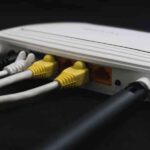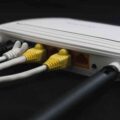In an increasingly connected world, the choice between Wi-Fi and cellular data is more relevant than ever. Whether streaming movies, working remotely, or managing smart home devices, understanding the nuances of these technologies ensures optimal performance, cost savings, and security. This guide breaks down the strengths, weaknesses, and ideal use cases for Wi-Fi and cellular data, empowering you to make informed decisions tailored to your needs.
Understanding Wi-Fi and Cellular Data
Wi-Fi
- How It Works: Wi-Fi uses radio waves to connect devices to a local router, which is linked to a broadband modem (e.g., cable, fiber, or DSL).
- Frequency Bands: Most routers operate on 2.4 GHz (longer range, slower speeds) and 5 GHz (shorter range, faster speeds). Wi-Fi 6 and the upcoming Wi-Fi 7 further enhance efficiency and capacity.
- Typical Use Cases: Home networks, offices, cafes, and public hotspots.
Cellular Data
- How It Works: Cellular networks rely on cell towers to transmit data via 4G LTE or 5G signals. Devices connect using a SIM card or eSIM.
- Generational Advancements: 4G offers speeds up to 100 Mbps, while 5G can exceed 1 Gbps with lower latency.
- Typical Use Cases: Mobile browsing, travel, and areas without fixed broadband.
| Feature | Wi-Fi | Cellular Data |
| Speed | Up to 9.6 Gbps (Wi-Fi 6) | Up to 10 Gbps (5G) |
| Range | ~150 ft indoors | Miles (dependent on cell towers) |
| Cost | 40–
40–100/month (unlimited) |
60–
60–90/month (unlimited plans) |
| Security | WPA3 encryption (if configured) | AES-256 encryption (built-in) |

Pros and Cons of Wi-Fi
Advantages
- Cost-Effectiveness
- Unlimited Data: Most home internet plans offer flat-rate pricing with no data caps, ideal for streaming 4K content, online gaming, or video conferencing.
- Free Public Hotspots: Cafes, airports, and libraries provide free access, though these networks often lack security.
- High Speed and Bandwidth
- Wi-Fi 6/6E: Delivers speeds up to 9.6 Gbps, supports 8K streaming, and handles 100+ devices simultaneously.
- Low Latency: Ping times under 20 ms benefit gamers and video callers.
- Smart Home Integration
- Seamlessly connects IoT devices like security cameras, thermostats, and voice assistants (e.g., Alexa, Google Home).
- Customization and Control
- Advanced users can configure firewalls, prioritize devices (QoS), and set up guest networks.
Disadvantages
- Limited Range and Physical Obstructions
- Signal Degradation: Thick walls, metal surfaces, and appliances like microwaves can reduce coverage. Mesh systems (e.g., Google Nest) or extenders are often needed for large homes.
- Outdoor Coverage: Standard routers struggle to reach backyards or detached garages without additional hardware.
- Security Risks
- Public Wi-Fi Vulnerabilities: Hackers can intercept data on unsecured networks. A 2023 report by Norton found 87% of public Wi-Fi users risked data theft.
- Home Network Threats: Weak passwords or outdated firmware expose routers to breaches. Enable WPA3 encryption and regular updates to mitigate risks.
- Dependency on ISP Reliability
- Outages due to weather, infrastructure failures, or ISP maintenance can disrupt connectivity for hours.
Pros and Cons of Cellular Data
Advantages
- Mobility and Ubiquitous Access
- Coverage: Cellular networks span highways, rural areas, and international destinations (with roaming). 5G now covers 80% of the U.S. population.
- No Setup Required: Devices connect automatically via SIM cards, eliminating router configurations.
- Enhanced Security
- Built-In Encryption: Cellular data uses SIM-based authentication and AES-256 encryption, making it safer than public Wi-Fi for banking or confidential work.
- 5G Performance
- Speed and Latency: 5G offers near-instantaneous response times (<10 ms), crucial for augmented reality (AR), telehealth, and autonomous vehicles.
- Network Slicing: Carriers can allocate dedicated “slices” of bandwidth for specific tasks (e.g., emergency services).
- Emergency Backup
- Use your phone’s hotspot during Wi-Fi outages for critical tasks like remote work.
Disadvantages
- Data Caps and Throttling
- “Unlimited” Plans: Many throttle speeds after 20–50 GB of usage. For example, Verizon’s “Start Unlimited” plan reduces priority during congestion.
- Overage Fees: Legacy plans may charge
- 10–
- 10–15 per extra GB.
- Network Congestion
- Peak Times: Speeds drop in crowded areas like stadiums or urban centers. A 2022 Opensignal study found 5G speeds decreased by 40% during rush hour.
- Battery Consumption
- Cellular radios drain batteries 25–30% faster than Wi-Fi. Disabling 5G or using low-power modes can extend battery life.
- Coverage Gaps
- Rural areas often rely on 4G LTE, which can be spotty. Starlink and carrier partnerships aim to bridge this gap by 2025.
Wi-Fi vs. Cellular Data: Ideal Use Cases
When to Choose Wi-Fi
- Streaming and Gaming: Netflix recommends 25 Mbps for 4K streaming—easily achievable with Wi-Fi 6.
- Smart Homes: Supports multiple IoT devices without taxing bandwidth.
- Cost-Sensitive Users: Families can share a single broadband plan across dozens of devices.
When to Choose Cellular Data
- Travel and Commuting: Maintain connectivity on trains, planes, or road trips.
- High-Security Needs: Conduct financial transactions or confidential work on cellular networks.
- Backup Internet: Use a hotspot during ISP outages.

Security Deep Dive
- Wi-Fi Risks:
- Man-in-the-Middle Attacks: Hackers intercept unencrypted data on public networks. Always use a VPN (e.g., NordVPN) for added protection.
- Router Exploits: Default passwords (e.g., “admin”) make routers easy targets. Change credentials and disable WPS.
- Cellular Strengths:
- SIM Authentication: Each SIM is uniquely encrypted, preventing unauthorized access.
- Network-Level Security: Carriers monitor threats in real-time, blocking malicious activity.
Cost Analysis
| Scenario | Wi-Fi Cost | Cellular Data Cost |
| Single User | $60/month (200 Mbps plan) | $80/month (Unlimited 5G plan) |
| Family of Four | $80/month (500 Mbps plan) | $200+/month (4 unlimited lines) |
| Travel | Free (hotel Wi-Fi) | $10/day (international roaming) |
Tip: Hybrid plans like Google Fi ($65/month for unlimited data + hotspot) blend both technologies.
Future Trends to Watch
- Wi-Fi 7 (2024):
- 320 MHz channels and Multi-Link Operation (MLO) will deliver speeds up to 46 Gbps—ideal for VR/AR applications.
- 5G Expansion:
- Carriers are deploying C-band and mmWave 5G to cover 90% of the U.S. by 2025, rivaling home broadband speeds.
- Satellite Internet:
- Starlink and Project Kuiper aim to provide global cellular-Wi-Fi hybrid coverage by 2030.
Conclusion
Wi-Fi and cellular data each excel in distinct scenarios. Wi-Fi dominates in fixed locations with its unlimited data, high speeds, and multi-device support, while cellular data offers unparalleled mobility, security, and emergency reliability. For most users, a hybrid approach—using Wi-Fi at home and cellular data on the go—delivers the best balance of performance and cost.
Final Checklist for Decision-Making:
- Assess your data usage (streaming, gaming, browsing).
- Evaluate coverage in your frequent locations (home, office, travel routes).
- Prioritize security needs (public Wi-Fi vs. cellular encryption).
- Compare costs based on household size and mobility.







